The Monstera Thai Constellation is a beautiful and highly sought-after plant known for its stunning variegated leaves. To ensure your plant is thriving, it’s important to recognize the signs of good health. This guide will help you identify these signs and provide tips to keep your Monstera Thai Constellation flourishing.
Introduction
The Monstera Thai Constellation is a member of the aroid plant family, which includes popular varieties like Philodendron, Anthurium, and Aglaonema. Native to the tropical rainforests of Central and South America, this plant is prized for its large, fenestrated leaves with beautiful variegation. Similar to Syngonium and Epipremnum, the Monstera Thai Constellation is not only beautiful but also relatively easy to care for.
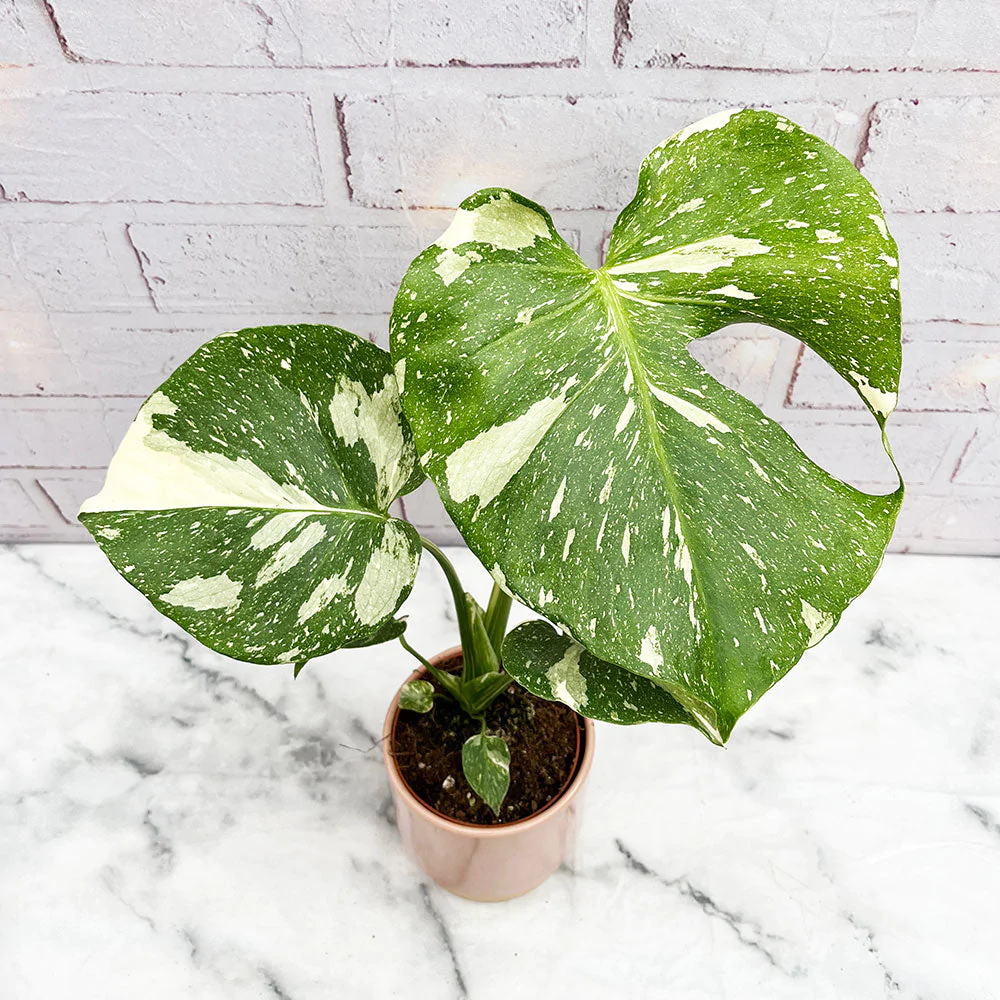
1. New Leaves Are Growing Quickly
Lots of New Growth
One of the clearest signs that your Thai constellation is healthy and happy is when you see lots of brand new leaves growing from the stems. A thriving constellation will regularly put out new leaves. In fact, you may see several new leaves unfurling every week during the growing season! The new leaves may start out quite small, but you’ll see them rapidly expanding day by day. “Learn about the healthy growth patterns of Monstera plants, including the Thai Constellation.”
Leaves Are Unfurling Fully
Pay attention to whether the new leaves are able to fully unfurl. Sometimes if a plant is struggling, the new leaves will get stuck while uncurling or fail to open all the way. With a healthy constellation, you’ll see each new leaf able to extend out completely from its emerging spear shape into its final broad and divided form.

2. Mature Leaves Are Large and Rigid
Impressive Size
A sure sign that your Thai constellation is thriving is when the existing mature leaves are not only staying healthy, but also reaching an impressive size. The leaves of a happy constellation can grow up to 12 inches wide when conditions are ideal! Leaves that are able to expand that broadly clearly indicate the plant is photosynthesizing well and overall loving its environment. “Explore the ideal conditions to achieve large, rigid leaves in your Monstera Thai Constellation.”
Rigid and Upright
In addition to impressive growth, thriving Thai constellation leaves will stand rigidly upright. When the plant receives appropriate light and care, the leaves extend out firmly from the stems and have an almost architectural quality in their posture. Drooping or downward curving leaves can be a red flag that the plant needs adjustment. Sturdy upright leaves show the Thai constellation is thriving.

3. Stems Are Growing Straight and Strong
Minimal Bending
The stems of your Thai constellation provide more valuable insight into how well it’s doing. If your plant has straight, upright stems shooting directly skyward with little to no bending, that demonstrates excellent internal strength and stability. “Discover how to provide the best support for your Monstera Thai Constellation’s growth.”
Sturdy Structure
Strong stems also provide the constellation with a sturdy internal framework to support those massive signature leaves. So straight stems that require little staking or support indicate your Thai constellation’s structure can keep up with all the impressive new growth. This is a very good sign it’s thriving!
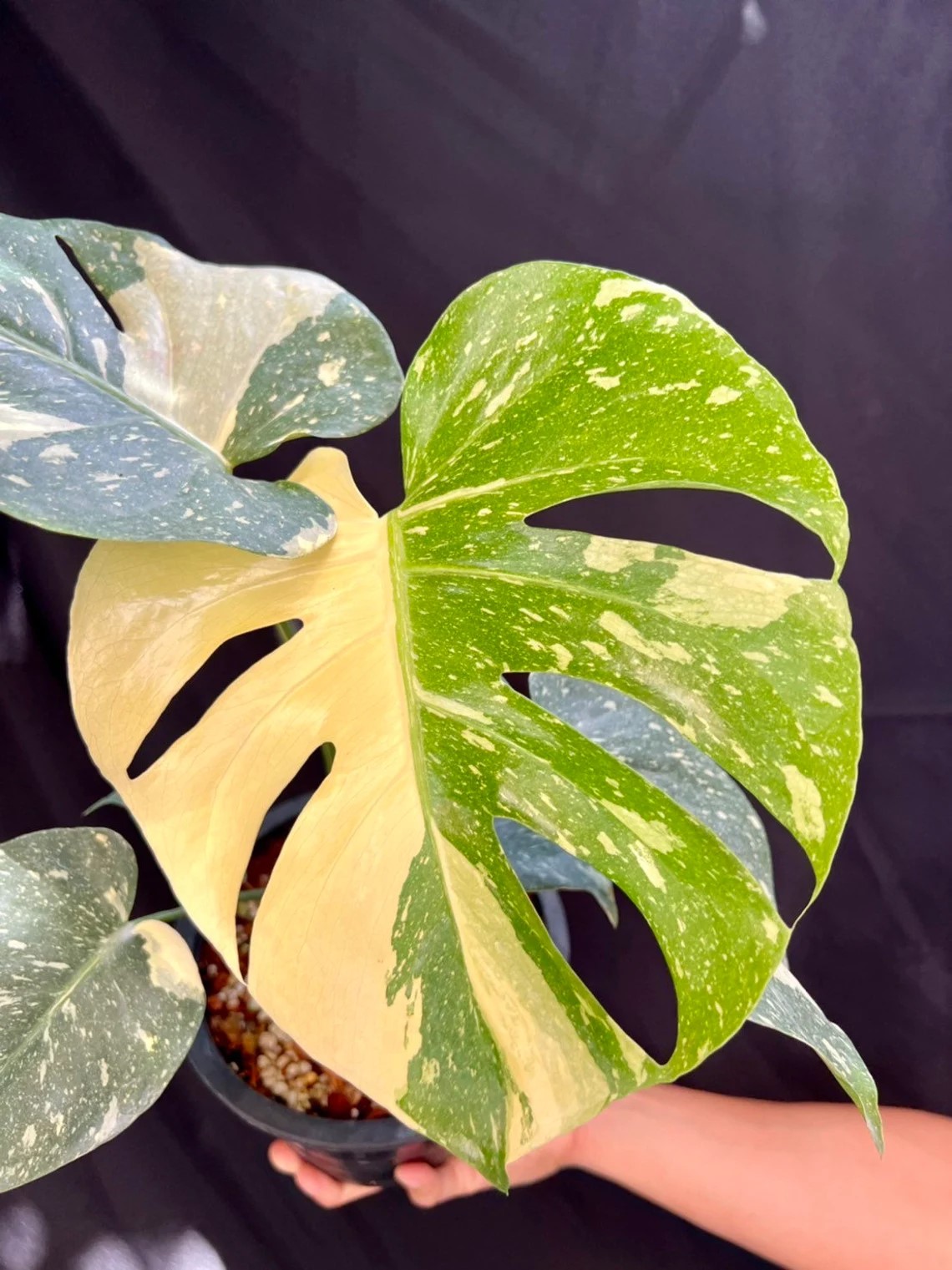
“Discover the unique charm of Monstera Thai Constellation today and elevate your space with its stunning foliage. Click to shop now and bring this exotic beauty home!”
4. Leaf Variegation Is Vibrant
Bold White Patterns
The stunning variegated leaves are of course the Thai constellation’s claim to fame! When your plant is happy and healthy, you’ll see beautiful bold white patterns decorating the leaves in an almost painted look. The white portions will stand out brightly from the deep green leaf centers and have crisp edges between the contrasting colors. “Understand the factors affecting leaf variegation in Monstera plants.”
Minimal Green Reversion
On rare occasions when a Thai constellation is struggling, the leaves may start to “revert” back to solid green coloration with the white patterns fading out. This is due to faulty chlorophyll production. But vibrant white variegation that persists from leaf to leaf without reverting shows that your plant is receiving what it needs to maintain the patterns and therefore is truly thriving!
Monstera species are the most sought after by aroid plant lovers
Conclusion
Keeping a close eye on your Thai constellation and watching for these four key signs – lots of new leaf growth, large mature leaves, straight strong stems, and vibrant variegation – will tell you clearly whether your plant is simply surviving or truly thriving. With the right care and environment, your Thai constellation can thrive for many years as a glorious display piece in your home!
FAQ
- What is Monstera Thai Constellation variegated?
- Monstera Thai Constellation variegated is a popular variegated cultivar of the Monstera plant. It is known for its unique white and green marbled leaves, which make it a sought-after houseplant among plant enthusiasts.
- How do I care for Monstera Thai Constellation?
- Proper care for Monstera Thai Constellation includes providing bright, indirect light, regular watering (letting the top inch of soil dry out between waterings), and occasional fertilization during the growing season. It’s important to provide support for the plant to climb as it matures.
- Why are the leaves of my Monstera Thai Constellation turning brown?
- Brown leaves on a Monstera Thai Constellation can be caused by overwatering, underwatering, or exposure to direct sunlight. Ensure that you’re maintaining the right balance of light and water for your plant to prevent browning of the leaves.
- Can I propagate Monstera Thai Constellation?
- Yes, you can propagate Monstera Thai Constellation through stem cuttings. Select a healthy stem with at least one leaf and place it in water or moist soil until it develops roots. Once roots have formed, you can transplant it into a new pot.
- Is Monstera Thai Constellation toxic to pets?
- Yes, Monstera Thai Constellation, like other Monstera varieties, contains calcium oxalate crystals, which can be toxic to pets if ingested. It’s best to keep this plant out of reach of cats and dogs to prevent any harm.
See more 5 Surprising Benefits of Monstera Thai Constellation!





















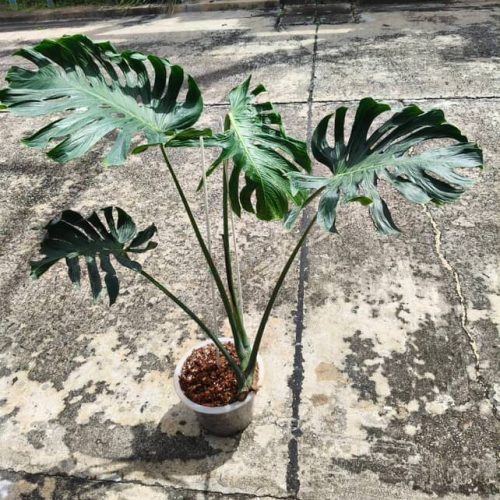
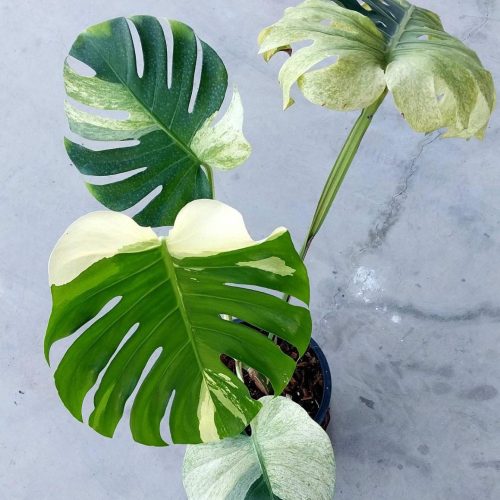



![12x Monstera Borsigiana Albo half leaves variegata [3-4 leaves]](https://greenboog.com/wp-content/uploads/2024/10/Monstera-Borsigiana-Albo-half-leaves-variegata-1-500x500.jpg)
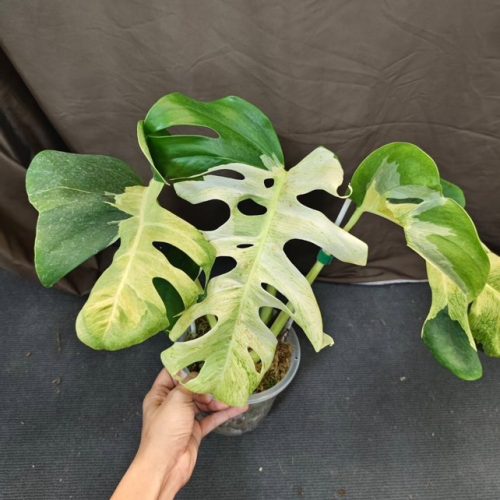

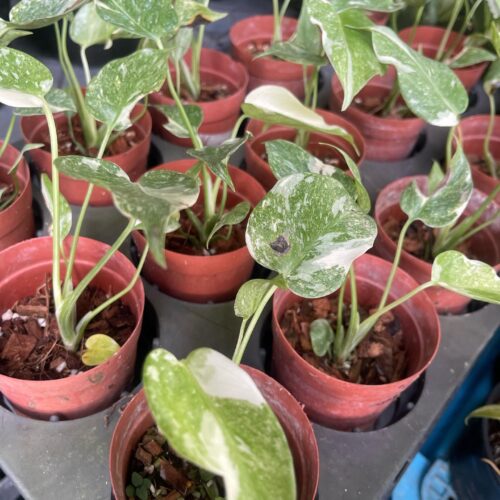
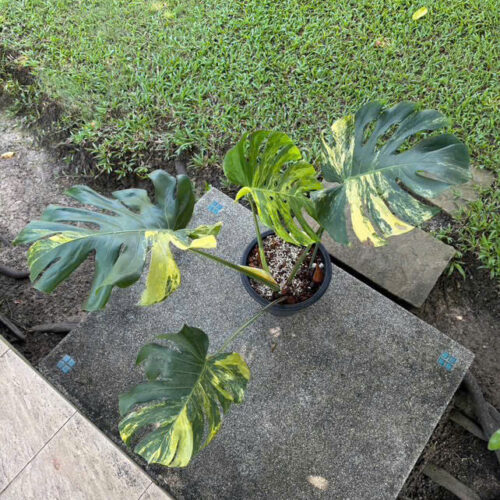
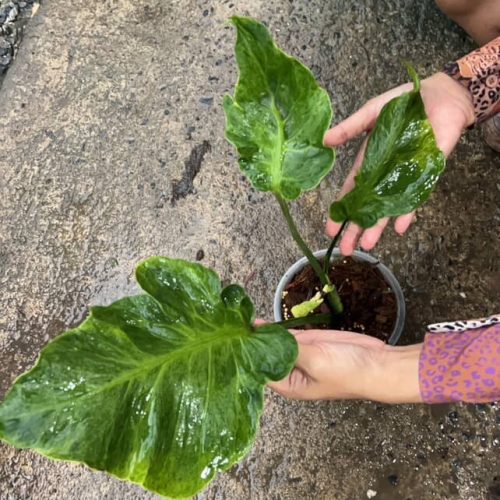
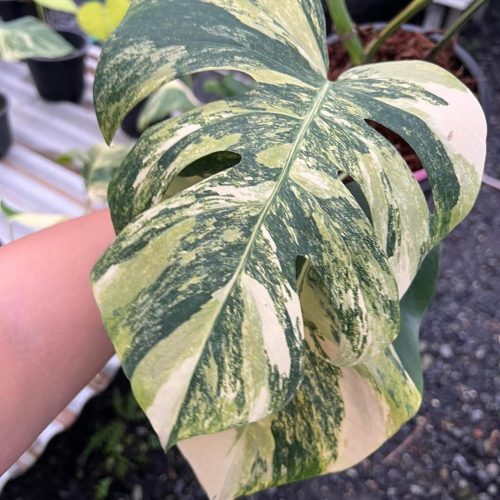

![10 Pots x Monstera Aurea Variegated / Mix Aurea tri color 3-4 leaves [well variegated]](https://greenboog.com/wp-content/uploads/2024/08/Monstera-Aurea-Tri-color-500x500.jpg)

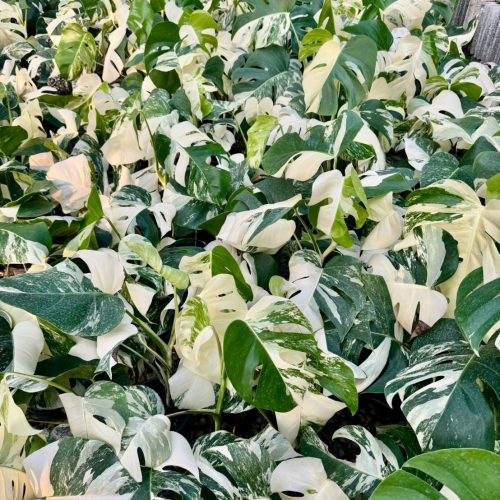
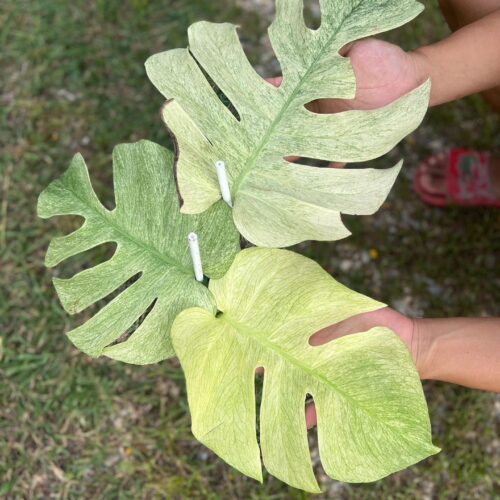
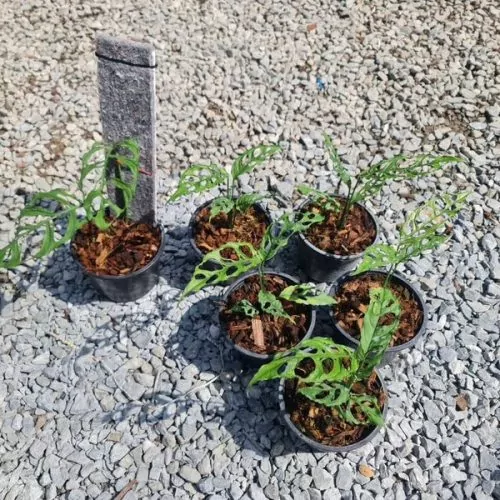
![[SALE] 10 Pots x Monstera Aurea Variegated 3-6 leaves [Medium size]](https://greenboog.com/wp-content/uploads/2025/01/Monstera-Aurea-variegated-4-6-leafs-500x482.jpg)

